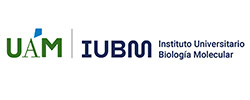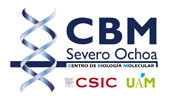Molecular basis of neurotransmission and its implication in neuropathology
Prof. Francisco Zafra Gómez. Catedrático. Departamento de Biología Molecular. UAM.
Our laboratory is interested in the molecular mechanisms of neurotransmission and its relationship with various pathologies of the nervous system. Communication between neurons implies an interplay between excitatory pathways mediated by glutamate and inhibitory neurotransmission mediated by GABA and glycine. The modulating action of less abundant neurotransmitters, such as dopamine, is added on top of these major pathways. This neurotransmitter crosstalk is controlled by a series of membrane proteins including ion channels, receptors and transporters. Alterations in these proteins are associated with diseases such as stroke, epilepsy or schizophrenia. Our objectives include the study of the interactions between some of these proteins and their environment, represented by the interactome and the lipidome. By using proximity labeling proteomic techniques we have been able to find new proteins and lipids that control the activity of the dopamine transporter. On the other hand, we have been able to find new interactions with the AKT1 signaling pathway with the sodium ion channel (NaV1.1), which controls the activity of GABAergic neurons and whose alteration is associated with a form of severe epilepsy called Dravet syndrome. We have also investigated regulatory mechanisms of glycine transporters, which participate in the transmission of pain in the spinal cord and of sensory information in the retina. In a model of neuropathic pain, we have obtained evidence indicating a readjustment of the levels of the glycinergic marker GlyT2 in response to microglia activation. In the retina, we have described a new regulatory mechanism by microRNAs that adjusts the levels of the GlyT1 to the intensity of light.
During this time, we have maintained collaborations with the groups of Dr. F.J. Díez-Guerra, Drs. B. López-Corcuera (CBMSO) and C. Avendaño (UAM) on the role of glycinergic pathways; Drs. A. Rodríguez Artalejo (UCM) and D. Bartolomé-Martín (la Laguna) in the study of the activity of the sodium and potassium channels. We have also collaborated with clinicians of the Sant Joan de Déu Hospital in Barcelona (Dr. J. Armstrong), the San Sebastián University Hospital (Dr. I. Martí-Carrera) and the University Hospital of Mostoles (Dr. A. Díaz de Bustamante) with whom we have participated in the investigation of the pathogenic mechanisms underlying a form of epilepsy due to mutations in the GABA transporter.
In summary, our work deepens our understanding of the mechanisms of communication in the brain under physiological and pathological conditions.


